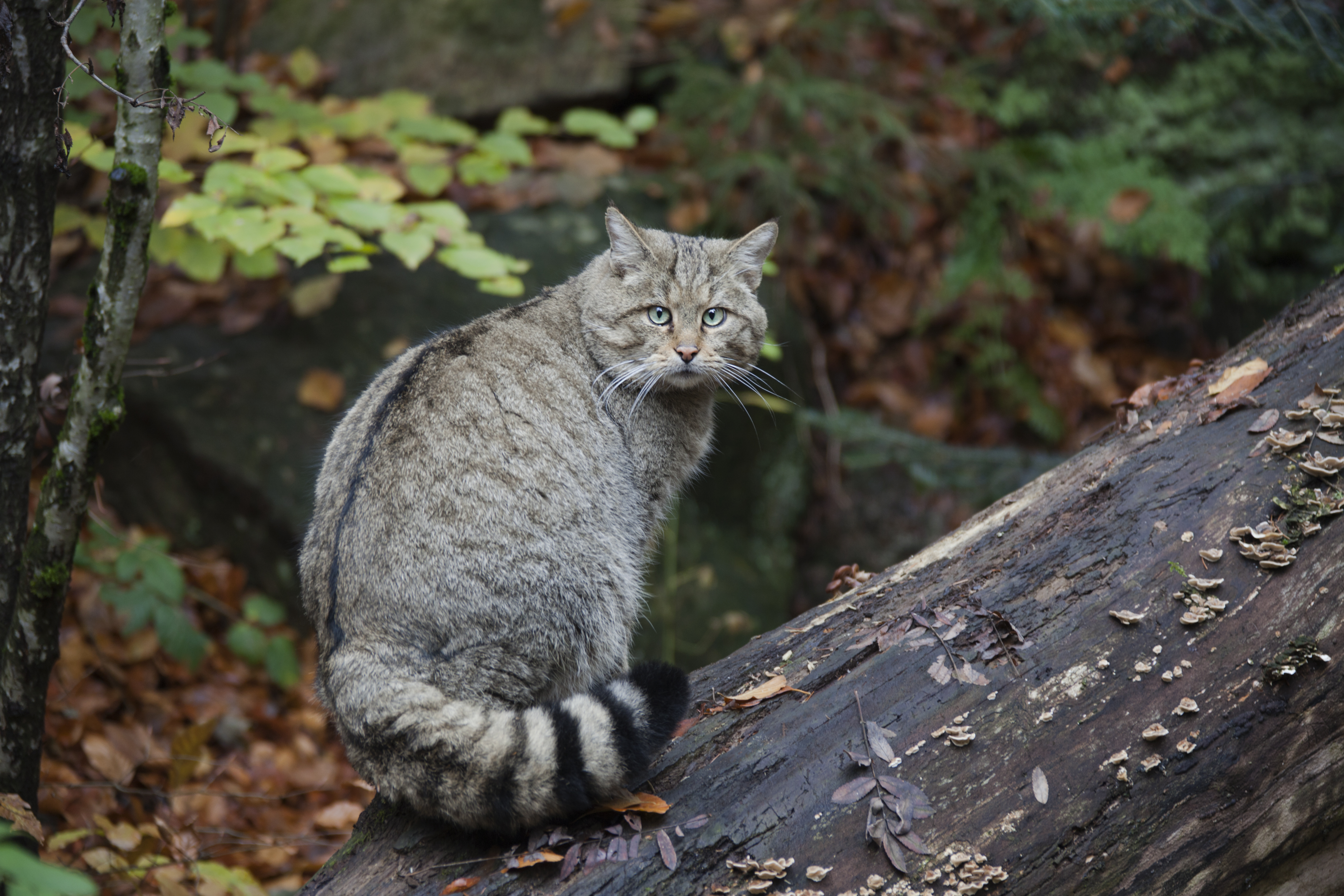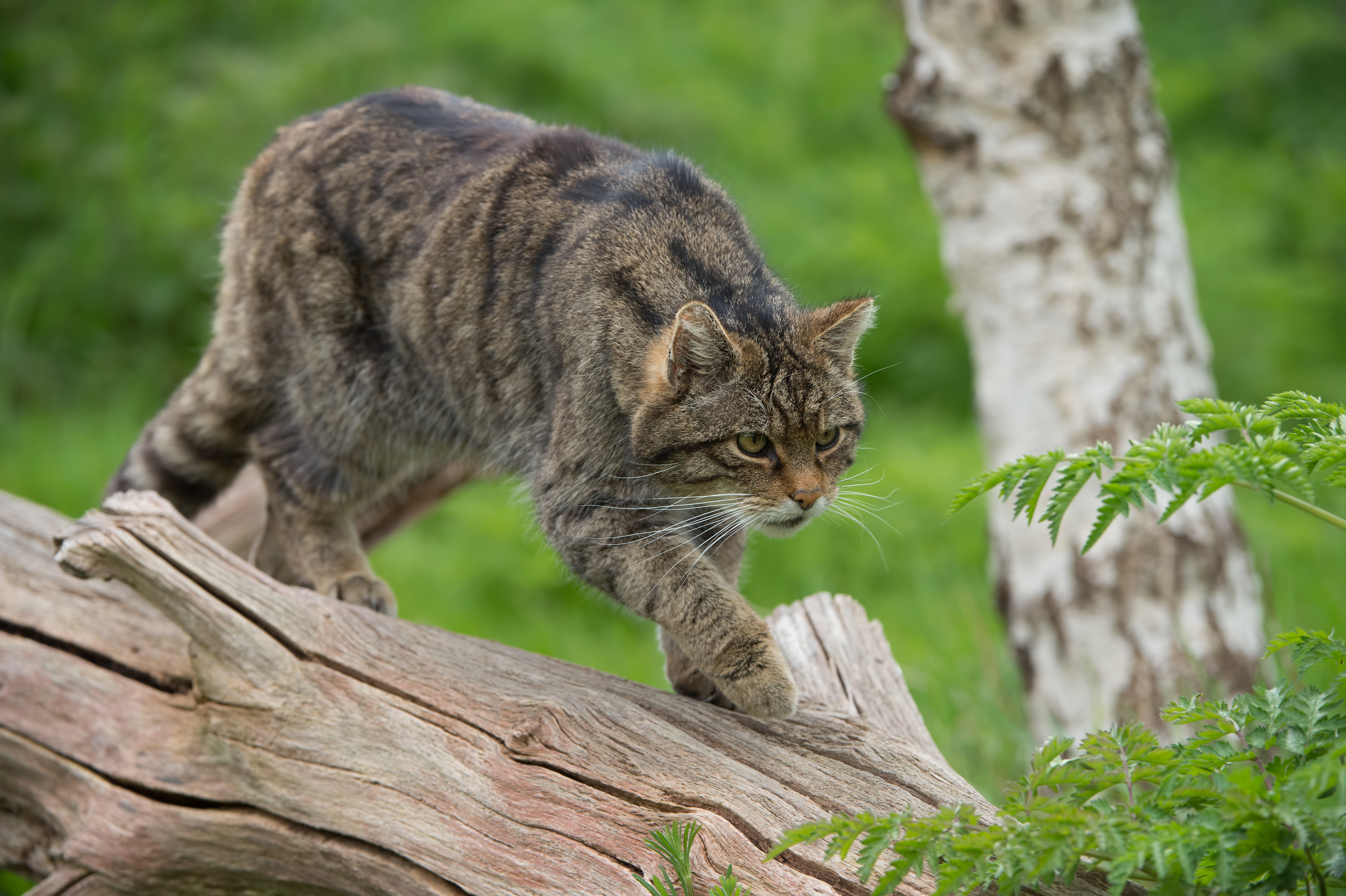The Elusive and Enigmatic Wildcat

By Jose Luis Gallego, environmental communicator @ecogallego
Less famous than the lynx, but equally beautiful, the wildcat (Felis silvestris) is the most obscure and enigmatic feline of the Iberian fauna. This solitary, elusive animal is reserved and discreet in its habits and behaviour, making it difficult to observe this feline in the wild, even for experts who study or monitor the species. So much so that we have very little data on its conservation status. Wildcat populations could have decreased in recent years because of changes to their habitats and interbreeding with domestic cats – a serious threat to this wild species.

Specimen of the wildcat
The wildcat is among the most spectacular animals on the Iberian Peninsula. Larger and stouter than its domestic counterpart, it is easily identifiable by its shape and gorgeously patterned coat. This wild feline sports shiny greyish-brown fur with a striped pattern and a spinal stripe running from the shoulders to the base of the tail. The colouring on the abdomen is lighter. The legs are short and strong with five toes in front and four in back, each fitted with sharp retractable claws.
A thick neck, covered in bushy fur, supports a bulky head with a short wide muzzle and striking greenish yellow eyes. Small triangular ears without tufts. Long white whiskers, a characteristic trait of the species. The tail is very long and broad with dark traverse rings that intensify in colour the closer they are to the tip, which is completely black. Wildcats grow to a length of about 65 centimetres, plus another 30 including the tail, and a height of about 30 centimetres. They can weigh up to eight kilos.
These felines are strict carnivores and mainly feed on wild rabbits, but they also hunt hare, rodents, reptiles, and various species of wild birds. Generally, they don’t scavenge, nor do they attack domestic fowl, which is why they don’t pose a problem for farmers.
A wary creature, the wildcat usually comes out at twilight and avoids all human contact. On rare occasions it can be spotted in broad daylight, prowling the edges of forest trails or sunning itself in fallow land or crop fields, with a particular fondness for meadows and vineyards.
Confusing a wildcat with a domestic tabby is unlikely, because the latter is much smaller, and its colouring is nowhere near as distinctive as that of its wild kin. The main attributes that set the two apart are the head, much sturdier and rounder in the wildcat, which also has a notably wider and bushier tail with a characteristic black tip.
Hybrids are far more difficult to tell apart – meaning individuals with similarly patterned fur that result from the interbreeding of wildcats and domestic cats. In fact, as mentioned earlier, interbreeding constitutes one of the main threats to the species. Another important factor contributing to the decline in wildcat populations in the wild is the loss of its characteristic habitat: broad-leaved forests with open meadows in mid–to-high mountain areas.

Specimen of the wildcat walking
In addition to threatening the survival of wildcat populations, feral or stray domestic cats are also among the greatest threats to the conservation of biodiversity overall. The International Union for Conservation of Nature (ICUN) has catalogued feral and stray cats as one of the 100 most harmful invasive species.
A recent research study by the Consejo Superior de Investigaciones Científicas (CSIC) published in the magazine Conservation Science and Practice warns that feral cats are the cause of more than a quarter of all present-day extinctions of birds, mammals, and reptiles in the world. Consequently, they are listed as one of the invasive predators most harmful to nature.
To prevent this problem, scientists call on cat owners to act responsibly and keep their pets at home, making sure they do not roam free or escape into nature where they not only threaten the genetic survival of the increasingly rare, indigenous wildcat, but can also wreak ecological havoc on local ecosystems.
